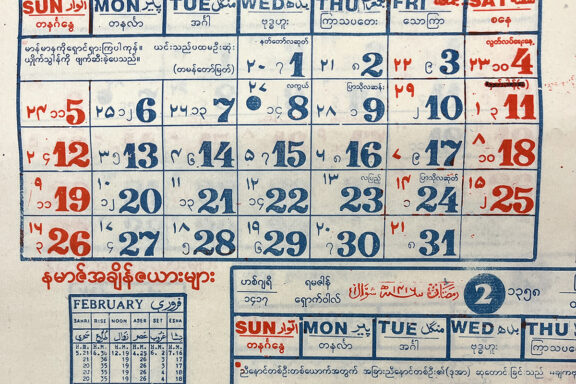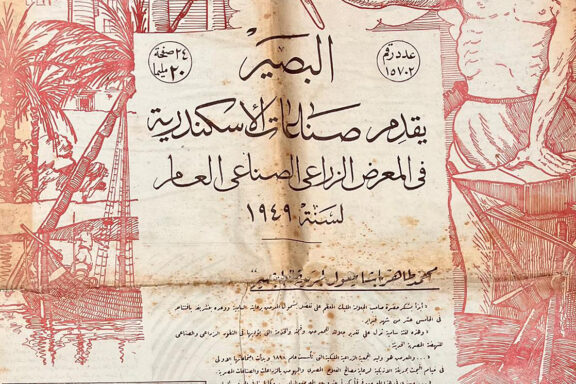Rikuo Hara
(PhD Student, Graduate School of Asian and African Area Studies, Kyoto University)
Introduction
Did you know that the Center for Southeast Asian Studies Library (CSEAS Library) holds a collection of approximately 2,000 (as of April 2024) Arabic-language materials? Arabic is strongly connected to Islam, as it is the sacred language that was chosen by Allah for the revelations. Therefore, it may not seem strange that the CSEAS Library would house Arabic materials related to Southeast Asia, where millions of Muslims live. However, most of the materials in the collection were acquired when CSEAS merged with the Center for Integrated Area Studies (CIAS) in 2017[1] and were published outside Southeast Asia.
Despite CSEAS’s acquisition of Arabic materials, usage of the collection remains relatively low. This can be attributed to three main factors. First, users may find that studies using Arabic are both geographically and linguistically distant from Southeast Asia. Second, most materials in the collection were published before 2000 and therefore lack the latest research findings. Finally, the Library of ASAFAS (Graduate School of Asian and African Area Studies) within Kyoto University holds a larger collection of Arabic materials. However, there are valuable Arabic materials unique to the CSEAS Library collection, highlighting the need for their organization and reclassification. Considering these circumstances, I recently undertook the task of rearranging and reclassifying the Arabic materials. In the following article, I present a snapshot of the CSEAS Library collection, categorized by region and features.
Although Jawi, which is Malay-Indonesian written in Arabic script, is used in Southeast Asia, this article focuses on only Arabic materials and does not include Jawi literature, which differs significantly from my specialty.
Overview of the Collection

The CSEAS collection is a unique resource for those engaged in the study of the rich and diverse heritage of the Arabic-speaking world. Scholars and researchers will find a wealth of materials to support their inquiries, ranging from Ibn Sīnā’s classical works to modern academic publications on socio-political dynamics. While the materials were published in various countries, approximately half are from Egypt. Almost all are books and pamphlets, with only a few periodicals. Regarding classification, the holdings primarily focus on contemporary humanities and social sciences, although resources concerning Arabic language studies, such as grammar guides and dictionaries, as well as literary works like novels, are relatively scarce. While many holdings are aimed at postgraduate students and above with experience and research in this field, there are also publications with simple content as well as academic ones.
North Africa

Publications from North Africa, especially Egypt, comprise the bulk of the collection. A diverse range of materials, including works of literature, history, religion, philosophy, sociology, and more offers profound insights into the complexities of North African societies. A significant portion addresses general social issues and political dynamics, with a notable emphasis on topics such as the Muslim Brotherhood and matters related to adjacent Palestine and Israel. The influence of the Arab-Israeli conflict is pronounced, with many materials vividly portraying the societal conditions during the wars while reflecting the period of their publication. Christian-related materials, particularly those concerning the Coptic Christians and Church in Egypt, are worth noting as a distinct part of the collection. Other materials include statistical data on urban and rural areas as well as administrative matters. Beyond Egypt, materials focusing on the Maghreb region, such as Morocco, predominantly focus on history and geography.
West Africa

Most of the materials published in West Africa held in the CSEAS Library are related to Islam and religious matters. These include the Qur‘an, Hadith, works on jurisprudence, and prayer books. There is also a large amount of material related to ṭarīqa (Sufi orders), such as the al-Ṭarīqa al-Tijānīya.[2] A notable standout are plain pamphlets known as “printed manuscripts,” which were reproduced by copying handwritten originals. Most were published in cities such as Kano, Nigeria, and tend to have less than 20 pages. In many cases, printed manuscripts do not have titles and the first sentence of the material is registered as a title of bibliographic data (see photo right). Their content may be challenging to read at first sight for those unfamiliar with Maghrebi script, yet they constitute an interesting materials.
Conclusion
Although today we can access many materials via the internet, most of those held by the CSEAS Library are only available locally and some are no longer in print. The collection therefore serves as a vital repository and a potential treasure trove for researchers. I have introduced the Arabic materials held by the CSEAS Library, broadly divided into those from North Africa and West Africa. There is also a wealth of material from outside these two regions, including from the Arabian Peninsula and the Sham region, as well as classical Islamic studies materials. The name of the CSEAS Library often leads one to believe that it does not hold materials related to anything other than Southeast Asia, but in addition to the Arabic materials introduced here, there are also materials in Hebrew and Persian. Like Arabic, both languages have been used across regional boundaries. It is our hope that users will explore these non-Southeast Asian language materials to cross the boundaries in their own minds.
This article is also available in Japanese. >>
「地域を架橋する言語:アラビア語資料から」
(原 陸郎)





